We included HMH Into Math Grade 5 Answer Key PDF Module 17 Lesson 6 Divide Decimals to make students experts in learning maths.
HMH Into Math Grade 5 Module 17 Lesson 6 Answer Key Divide Decimals
I Can divide a decimal by a decimal.
Step It Out
Question 1.
Marisol sets up a lemonade stand. At the end of the day, she has made $8.75. How many cups of lemonade did Marisol sell?

A. What is the division problem you are trying to solve?
Answer:
Number of cups of lemonade Marisol sells = 35.
Explanation:
Amount of money she makes at the end of the day = $8.75.
Cost of one lemonade = $0.25.
Number of cups of lemonade Marisol sells = Amount of money she makes at the end of the day ÷ Cost of one lemonade cup
= $8.75 ÷ $0.25
= 35.
B. How could you write this problem as a fraction?
Answer:
Number of cups of lemonade Marisol sells = 35.
Explanation:
Amount of money she makes at the end of the day = $8\(\frac{3}{4}\).
Cost of one lemonade = $\(\frac{1}{4}\).
Number of cups of lemonade Marisol sells = Amount of money she makes at the end of the day ÷ Cost of one lemonade cup
= $8\(\frac{3}{4}\) ÷ $\(\frac{1}{4}\)
= 35.
C. What number could you multiply the numerator and denominator by to write an equivalent fraction with whole numbers? What is the equivalent fraction?
Answer:
Rule for Multiplication of Fractions:
When multiplying fractions, simply multiply the numerators together and then multiply the denominators together. Simplify the result. This works whether the denominators are the same or not.
For example: If you multiply the fractions 3/2 and 4/3 together, you get 12/6
Explanation:
In math, equivalent fractions can be defined as fractions with different numerators and denominators that represent the same value or proportion of the whole.
Rule for Multiplication of Fractions:
When multiplying fractions, simply multiply the numerators together and then multiply the denominators together. Simplify the result. This works whether the denominators are the same or not. If you multiply the fractions $\(\frac{1}{4}\)
D. Write and solve the new division problem shown by the equivalent fraction.
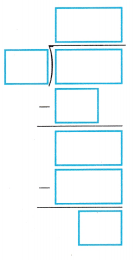
Answer:
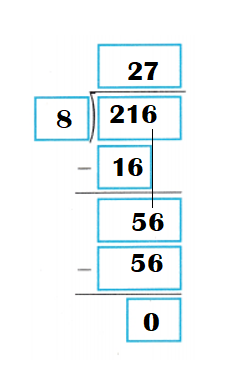
Explanation:
216 ÷ 8 = 27.
E. How can you use this quotient to solve the original division problem?
Answer:
Quotient × Divisor = Dividend
=> 27 × 8 = 216.
Explanation:
Dividend ÷ Divisor = Quotient.
216 ÷ 8 = 27.
=> Quotient × Divisor = Dividend
=> 27 × 8 = 216.
F. How many cups of lemonade did Marisol sell?
Answer:
Number of cups of lemonade Marisol sells = 35.
Explanation:
Amount of money she makes at the end of the day = $8\(\frac{3}{4}\).
Cost of one lemonade = $\(\frac{1}{4}\).
Number of cups of lemonade Marisol sells = Amount of money she makes at the end of the day ÷ Cost of one lemonade cup
= $8\(\frac{3}{4}\) ÷ $\(\frac{1}{4}\)
= 35.
Turn and Talk To make division easier to understand and to carry out, which number do you think is more important to be a whole number, the divisor or the dividend? Explain.
Answer:
To make division easier to understand and to carry out, divisor is more important to be a whole number, because it will help to guess the quotient.
Explanation:
The steps are more or less the same, except for one new addition:
Divide the tens column dividend by the divisor.
Multiply the divisor by the quotient in the tens place column.
Subtract the product from the divisor.
Bring down the dividend in the ones column and repeat.
=> To make division easier to understand and to carry out, divisor is more important to be a whole number, because it will help to guess the quotient.
Question 2.
James rides his bike 16.32 miles. He rides about 9.6 miles each hour. How many hours does it take James to ride this distance?
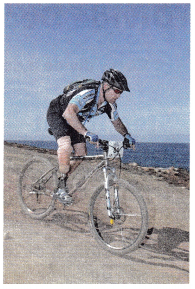
A. What division expression models the situation?
Answer:
Number of hours it takes James to ride this distance = 1.7.
Explanation:
Number of miles James rides his bike = 16.32.
Number of miles he rides each hour = 9.6.
Number of hours it takes James to ride this distance = Number of miles James rides his bike ÷ Number of miles he rides each hour
= 16.32 ÷ 9.6
= 1.7.
B. Estimate the answer. Show your work.
Answer:
Estimation: 2.0
Explanation:
Number of miles James rides his bike = 16.32.
Number of miles he rides each hour = 9.6.
Estimation of answer: 2.0.
Number of hours it takes James to ride this distance = Number of miles James rides his bike ÷ Number of miles he rides each hour
= 16.32 ÷ 9.6
= 1.7 = Actual Answer.
C. How can you write the division problem as a fraction?
Answer:
Number of hours it takes James to ride this distance = 1.7.
Explanation:
Number of miles James rides his bike = 16.32.
Number of miles he rides each hour = 9.6.
Number of hours it takes James to ride this distance = Number of miles James rides his bike ÷ Number of miles he rides each hour
= \(\frac{1632}{100}\) ÷ \(\frac{96}{10}\)
= 1.7.
D. Write an equivalent fraction with a whole-number denominator. How did you do this?
Answer:
Multiply both the numerator and denominator of a fraction by the same whole number.
Explanation:
Multiply both the numerator and denominator of a fraction by the same whole number. As long as you multiply both top and bottom of the fraction by the same number, you won’t change the value of the fraction, and you’ll create an equivalent fraction.
E. Write and solve the new division problem.
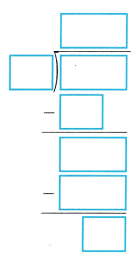
Answer:
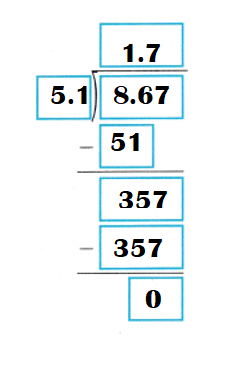
Explanation:
8.67 ÷ 5.1 = 1.7.
F. How do you know that the quotient of the new division problem is the same as the quotient of the original division problem?
Answer:
You can use multiplication to check your division answer this way.
- Do the division problem.
- Multiply the quotient times the divisor.
- If there is a remainder, add it to the multiplication product.
- Compare this answer to the dividend. They should be the same number (1.7 = 1.7).
Explanation:
The quotient can be calculated by dividing the dividend with the divisor.
Quotient = Dividend ÷ Divisor.
Original division: 16.32 ÷ 9.6 = 1.7.
New division: 8.67 ÷ 5.1 = 1.7.
G. Is your answer reasonable? Explain.
Answer:
Yes, my answer is reasonable because the answer are correct.
Explanation:
Both division answers are same, its reasonable.
H. How many hours does James ride?
Answer:
1.7 hours James ride.
Explanation:
Number of miles James rides his bike = 16.32.
Number of miles he rides each hour = 9.6.
Number of hours it takes James to ride this distance = Number of miles James rides his bike ÷ Number of miles he rides each hour
= 16.32 ÷ 9.6
= 1.7.
Turn and Talk Will you get the same answer if you multiply the dividend and divisor by 100 instead of by 10? Why is multiplying by 10 more efficient? Explain.
Answer:
No, we don’t get same answers because 10 and 100 are not same numbers.
Explanation:
Move the decimal point one place to the left in the dividend; this is the quotient. Correct. There are two zeros in the divisor (100), so to find the quotient, take the dividend (0.045) and move the decimal point two places to the left.
Check Understanding
Question 1.
A school shirt sells for $8.25. So far, $57.75 has been raised from selling the shirts. How many shirts have been sold?
Answer:
Number of shirts have been sold =7.
Explanation:
Selling cost of a school shirt = $8.25.
Amount of price has been raised from selling the shirts = $57.75
Number of shirts have been sold = Amount of price has been raised from selling the shirts ÷ Selling cost of a school shirt
= $57.75 ÷ $8.25
= 7.
Divide.
Question 2.
12.76 ÷ 3.19
Answer:
12.76 ÷ 3.19 = 4.
Explanation:
Dividend ÷ Divisor = Quotient.
12.76 ÷ 3.19 = 4.
Question 3.
69.72 ÷ 4.2
Answer:
69.72 ÷ 4.2 =16.6.
Explanation:
Dividend ÷ Divisor = Quotient.
69.72 ÷ 4.2 = 16.6.
Question 4.
93.5 ÷ 4.25
Answer:
93.5 ÷ 4.25 = 22.
Explanation:
Dividend ÷ Divisor = Quotient.
93.5 ÷ 4.25 = 22.
On Your Own
Question 5.
A peacock’s display is 86.25 inches wide. The width of each of its feathers is 1.25 inches. How many feathers wide is the peacock’s display?
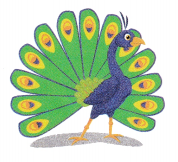
Answer:
Number of inches feathers wide is the peacock’s display = 69.
Explanation:
Number of inches wide a peacock’s display = 86.25.
Number of inches width of each of its feathers = 1.25 inches.
Number of inches feathers wide is the peacock’s display = Number of inches wide a peacock’s display ÷ Number of inches width of each of its feathers
= 86.25 ÷ 1.25
= 69.
Question 6.
Attend to Precision Carlos sells coupon booklets for $5.50 apiece. He makes $60.50. Monica sells the same booklets for $4.75 each and makes $57. Who sells more booklets? How many more?
Answer:
Monica sells one booklet more than Carlos.
Explanation:
Cost of apiece coupon booklets Carlos sells = $5.50.
Amount of money he makes =$60.50.
Number of booklets he sells = Amount of money he makes ÷ Cost of apiece coupon booklets Carlos sells
= $60.50 ÷ $5.50
= 11.
Cost of apiece coupon booklets Monica sells = $4.75.
Amount of money she makes =$57.
Number of booklets she sells = Amount of money he makes ÷ Cost of apiece coupon booklets Monica sells
= $57 ÷ $4.75
= 12.
Divide.
Question 7.
16.66 ÷ 3.4
Answer:
16.66 ÷ 3.4 = 4.9.
Explanation:
Dividend ÷ Divisor = Quotient.
16.66 ÷ 3.4 = 4.9.
Question 8.
192.5 ÷ 5.5
Answer:
192.5 ÷ 5.5 = 35.
Explanation:
Dividend ÷ Divisor = Quotient.
192.5 ÷ 5.5 = 35.
Question 9.
452.64 ÷ 24.6
Answer:
452.64 ÷ 24.6 = 18.4.
Explanation:
Dividend ÷ Divisor = Quotient.
452.64 ÷ 24.6 = 18.4.
Question 10.
343.2 ÷ 13.2
Answer:
343.2 ÷ 13.2 = 26.
Explanation:
Dividend ÷ Divisor = Quotient.
343.2 ÷ 13.2 = 26.
Question 11.
57.27 ÷ 8.3
Answer:
57.27 ÷ 8.3 = 6.9.
Explanation:
Dividend ÷ Divisor = Quotient.
57.27 ÷ 8.3 = 6.9.
Question 12.
391.84 ÷ 31.6
Answer:
391.84 ÷ 31.6 = 12.4.
Explanation:
Dividend ÷ Divisor = Quotient.
391.84 ÷ 31.6 = 12.4.
Question 13.
Alexa spends $37.74 buying toy train cars for her nieces. How many train cars does Alexa buy?
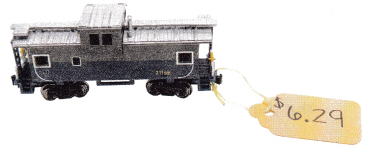
Answer:
Number of train cars Alexa buys = 6.
Explanation:
Amount of money Alexa spends buying toy train cars for her nieces = $37.74.
Cost of train car = $6.29.
Number of train cars Alexa buys = Amount of money Alexa spends buying toy train cars for her nieces ÷ Cost of train car
= $37.74 ÷ $6.29
= 6.
Question 14.
Shaniqua uses the ingredients shown in the table to make lemonade. She pours herself a 0.5-cup serving of the lemonade to sample the taste. She then pours the remaining lemonade into 0.75-cup glasses for her friends.

Write an expression to model this situation.
Answer:
Number of cups of lemonade she fills into glasses = 10.
Explanation:
Number of cups lemon juice = 2.5.
Number of cups water = 5.5.
Number of cups serving of the lemonade to sample the taste she pours herself = 0.5.
Number of cups remaining lemonade she pours glasses for her friends = 0.75.
Number of cups of lemonade she fills into glasses = [Number of cups water + (Number of cups lemon juice – Number of cups serving of the lemonade to sample the taste she pours herself)] ÷ Number of cups remaining lemonade she pours glasses for her friends
= [5.5 + (2.5 – 0.5)] ÷ 0.75
= (5.5 + 2.0) ÷ 0.75
= 7.5 ÷ 0.75
= 10.
How many glasses can Shaniqua fill?
Answer:
Number of cups of lemonade she fills into glasses = 10.
Explanation:
Number of cups lemon juice = 2.5.
Number of cups water = 5.5.
Number of cups serving of the lemonade to sample the taste she pours herself = 0.5.
Number of cups remaining lemonade she pours glasses for her friends = 0.75.
Number of cups of lemonade she fills into glasses = [Number of cups water + (Number of cups lemon juice – Number of cups serving of the lemonade to sample the taste she pours herself)] ÷ Number of cups remaining lemonade she pours glasses for her friends
= [5.5 + (2.5 – 0.5)] ÷ 0.75
= (5.5 + 2.0) ÷ 0.75
= 7.5 ÷ 0.75
= 10.
Question 15.
Model with Mathematics Each mint in a roll has a thickness of 0.25 inch.

Write and solve an equation for how many mints are in the roll.
Answer:
Number of mints are in the roll = 14.
Explanation:
Number of inches of thickness each mint in a roll has = 0.25.
Number of inches mint = 3.5.
Number of mints are in the roll = Number of inches mint ÷ Number of inches of thickness each mint in a roll has
= 3.5 ÷ 0.25
= 14.
Describe how you solved the problem.
Answer:
This is the way of division method i used and solved the problem.
Number of mints are in the roll = 14.
Explanation:
Number of inches of thickness each mint in a roll has = 0.25.
Number of inches mint = 3.5.
Number of mints are in the roll = Number of inches mint ÷ Number of inches of thickness each mint in a roll has
= 3.5 ÷ 0.25
= 14.
Question 16.
Open-Ended Write and solve a word problem that uses the fraction \(\frac{74.2}{5.3}\).
Answer:
There are 74.2 liters of water in a bucket. 5.3 liters of water is filled in each mug. How many mugs are used to fill the water.
Number of mugs are used to fill the water = 14.
Explanation:
There are 74.2 liters of water in a bucket. 5.3 liters of water is filled in each mug. How many mugs are used to fill the water.
Number of liters of water in a bucket = 74.2.
Number of liters of water filled in each mug = 5.3.
Number of mugs are used to fill the water = Number of liters of water in a bucket ÷ Number of liters of water filled in each mug
= 74.2 ÷ 5.3
= 14.